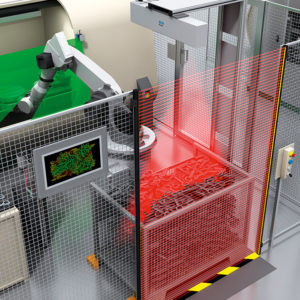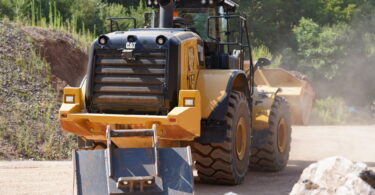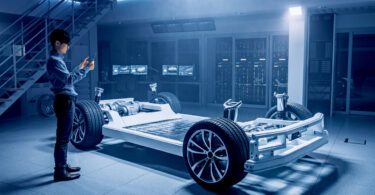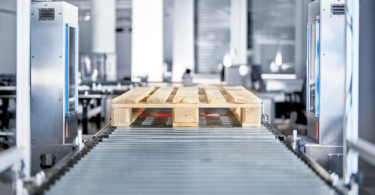A rundown of robots, vision systems, and how you get them to work together
Robots help us do a LOT of things in the industrial automation space, like pick and place items onto a conveyor belt, inspect pieces for quality assurance, assemble items, and more. This is an incredible feat! But a robot cannot do this independently. It needs eyes—a vision system—to execute these kinds of operations.
Well that sounds good and dandy, right? Just slap on a vision system and everything will work. Not really. Before you set your souped up robot on its merry way, you need to go through the process of hand-eye alignment.

What is hand-eye alignment?
In the context of industrial automation and robots, hand-eye alignment refers to the synchronization or alignment between the robot's hand (end effector) and its vision system (camera or sensor). It involves the ability of the robot to accurately perceive and locate objects in its workspace and then manipulate or interact with them using its hand or gripper.
Hand-eye alignment is crucial for pick-and-place operations, assembly tasks, quality inspection, and machine tending. It allows the robot to precisely locate and grasp objects, align components during assembly, or perform visual inspections with high accuracy.
To achieve hand-eye alignment, robots typically employ a combination of vision systems and robotic control algorithms. The vision system captures images or data from the robot's environment, and the control algorithms process this information to determine the position, orientation, and other relevant characteristics of the objects. The robot's control system then uses this data to plan and execute the necessary movements to align the hand or gripper with the target object.
Techniques for hand-eye alignment in robotics
Several techniques can be used to establish hand-eye alignment. One common approach is to calibrate the robot's vision system with respect to its hand or gripper. This calibration process involves capturing images or data from the vision system while the robot's hand is at known positions. By correlating the visual information with the known hand positions, the system can establish a relationship between the hand and the camera coordinate systems.
Once the calibration is complete, the robot can use the acquired transformation matrix to determine the hand position and orientation based on the visual information obtained from the camera. This information allows the robot to precisely move its hand to the desired location, ensuring accurate manipulation and interaction with objects in its workspace.
Hand-eye alignment & PLB
The PLB hand-eye alignment process (sometimes called calibration) teaches the robot’s coordinate system to the PLB 3D robot guidance system. This allows PLB to give the robot absolute coordinates with no need for post-processing by the robot. In short, we are teaching the robotic system how to use its eyes.
The PLB Hand-eye alignment process is unique in that a cone or sphere is used for alignment instead of a grid. This allows for:
- Simple, easy-to-use setup and commissioning of the PLB 3D robot guidance system
- Significant reduction of the impact of ambient light on the hand-eye alignment process
- Ability to automate the hand-eye alignment process for maintenance/support purposes
- Robust equipment that can stand up to industrial environments over time without replacement
Overall, hand-eye alignment in industrial automation and robots refers to the synchronization between a robot's hand or gripper and its vision system. It enables the robot to accurately perceive, locate, and manipulate objects. This facilitates the various tasks you need to accomplish in your industrial settings.
So, remember: a robot plus a vision system does NOT equal a ready-to-operate setup. First: calibrate. Second: set your souped up robot on its merry way.
Want to learn more about hand-eye alignment?







